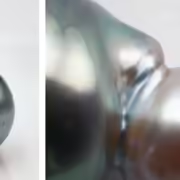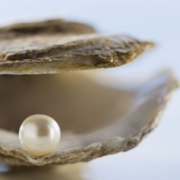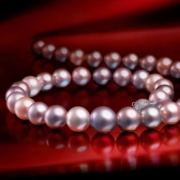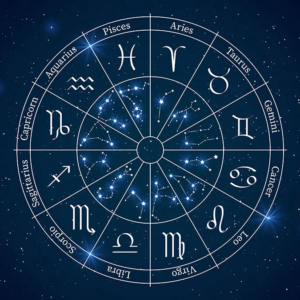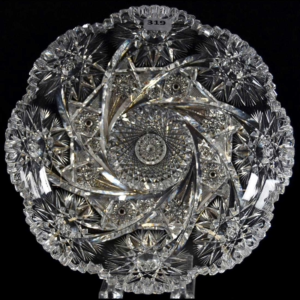Pearl stone – properties, virtues & benefits
Pearl Stone is a rare and precious fine stone, prized for its luminous, shimmering beauty. Discover its fascinating history, properties and uses in the world of jewelry.
PEARL CHARACTERISTICS
- Chakra: Crown.
- Properties: Purity, innocence, wisdom, tranquility.
- Astrology: Moon.
- Zodiac: Cancer.
- Elements: Water.
- Colors: White, silver.
- Hardness: 2.5 – 4.5 on the Mohs scale.
- Chemical Formula: CaCO3 (calcium carbonate).
- Associated god: Aphrodite (Greek goddess of love and beauty).
PERLE – HIS STORY
The first use of pearls dates back to prehistoric times, as evidenced by excavations of Paleolithic tombs. The stone was not then used as jewelry or a necklace, but sewn directly onto clothing along with shells. Sites where this ritual has been observed include the Madeleine in the Dordogne, Grimaldi in Italy and the Sungir site in Russia. The latter was a vast camp dating back over 32,000 years, containing the tomb of an adult accompanied by two children entirely covered with thousands of stones on their clothing. Excavations carried out by French archaeologists in the United Arab Emirates at the Umm al Qaiwain site also revealed the use of stones in funeral rituals around 5500 BC. Thus, the use of stones in a funerary context was common in geographically opposite sites.
In the Persian Gulf region, funerals were marked by the use of stones delicately placed on the skull of the deceased. However, in the fourth millennium, stones began to be used in the palm of the hand rather than on the skull. Stones have always been used in different cultures throughout history. The Chinese appreciated them around 2300 B.C. as they were considered a gift from nature, as attested by numerous Hindu inscriptions and texts referring to their use to establish a special bond with the god Krishna. In Egypt, stone was used as early as 4000 BC for decoration, and the use of precious stones began in the fifth century BC to symbolize purity. In Roman civilization, stones were associated with symbols of prestige and wealth, and reserved for people of high rank.
Merit was an important criterion for wearing a stone in various civilizations. The Greeks appreciated the beauty of stones and associated them with happy events such as weddings, where they were a symbol of strong love. The Arabs also regarded stones as precious treasures from paradise, and had them in abundance thanks to the oyster beds along the Persian Gulf. American Indians valued freshwater stones from rivers and lakes, which they often gave as gifts to people of great worth. The French, Spanish and Portuguese colonies revealed a genuine local trade in stones, with superior quality found in the Caribbean, where stones were abundant. Over-consumption and pollution, however, have reduced their abundance. The Japanese discovery of the technique for cultivating oysters at the end of the 19th century democratized access to stones, once reserved for the elite in ancient civilizations. The largest pearl discovered, Allah, was fished in 1934 and weighs 6.4 kg, with a market value in excess of 60 million dollars in 2006. Although oysters can be cultivated to produce pearls, their value remains high.
PEARLSTONE – ITS ORIGIN AND COMPOSITION
The pearl is a small bead of mother-of-pearl produced by mollusks such as oysters and mussels. They range in color from white to gray, and vary in diameter. Pearl formation begins when an irritating object, such as sand or a pebble, penetrates the oyster’s shell and the latter secretes nacre to cover it completely, a rare process as it requires external irritation. The colors of pearls can vary from white to black, through to astonishing shades of green and blue, depending on the species of mollusc and its environment. Secondary colors, called traits, are shades that appear around the base color in the form of a translucent layer, but are not always present on pearls. Mother-of-pearl, also known as orient, can exhibit an optical phenomenon of iridescence linked to the appearance of aragonite layers, more pronounced with a greater number of layers. Tahitian pearls produced in French Polynesia are among the best-known, with a larger size and diameter and darker colors. South Sea pearls, freshwater pearls, Keshi or Melo pearls are highly sought after for their rarity and beauty, with variations in color and appearance depending on the geographical location of the mollusk.
.

PERLE – VERTUS ET PROPRIÉTÉS
PHYSICAL PEARL
Stone color is often associated with virtues and qualities in various ancient civilizations. White stone is often associated with purity and sPirituality, while shades of beige are associated with softness and soothing. Shades of gray are associated with discretion and modesty, while Pinkish hues are associated with love and affection. White stones with green reflections are highly sought-after for their soothing and calming properties, particularly for relaxation. Blue reflections on a white stone emphasize the creative and artistic side, often associated with round shapes. Contrary to popular belief, black stone is considered to be protective, with significant psychological and physical benefits. It is often worn as jewelry, like a necklace, to be permanently on one’s person, and is used in many civilizations.
PHYSICAL PEARL
The stone is known for its relaxing effect and its virtues on decalcification problems. The properties associated with this stone have been known for a long time. It is considered a soft and gentle stone, associated with the feminine sPirit, and is often used to calm states of sadness and nervousness. In India, Hindu medicine recognized the stone’s benefits for a variety of physical ailments, such as sight and blood disorders, and used it to revive the body’s energy and essential functions. The Maharal of Prague also used the stone in many circumstances, recognizing its virtues.
The Pearl stone can be consumed in powder form to enjoy its many benefits. It is associated with the feminine sPirit and is used to combat sadness and nervousness. In India, Hindu medicine used it to treat a variety of physical ailments, such as visual and blood disorders, and to revive the body’s energy and essential functions. Pearl stone is also known for its digestive properties, for stimulating the adrenal glands, for strengthening eyes and nails, and for reducing stress and anxiety. It is also considered an aphrodisiac and is associated with fertility in women. The preferred shape for the stone is usually round or square, and it can be used in powder or jewelry form to benefit from its positive effects on body and mind.

PEARL STONE – CLEAN AND RECHARGE
Pearl Stone is a delicate stone that requires special care when cleaning and recharging. Here are a few tips for looking after your Perle:
Cleaning:
- Avoid using abrasive products or harsh detergents to clean your Perle.
- Use lukewarm water and a soft cloth instead to gently wipe the stone’s surface.
- Avoid submerging the stone completely in water, as this may damage its surface.
Charge:
- The Pearl Stone is a stone that recharges in moonlight. Place it on a windowsill or outside on a full moon night to recharge.
- You can also use the earth method to recharge your Pearl Stone by placing it in a bowl filled with earth for several hours.
- Avoid recharging the Pearl Stone with methods such as direct sunlight or saltwater purification, as this can damage its delicate surface.
WHERE DOES THE PERLE NAME COME FROM?
The name “Perle” refers to the shape and appearance of the stone. Indeed, Perle closely resembles the natural pearls found in shells. The stone is characterized by a smooth, shiny, shimmering surface, reminiscent of the nacre of pearls. That’s why it’s so named and is often associated with symbols of purity, innocence and timeless beauty.
ON WHICH CHAKRA DOES THE PEARL WORK?
Pearl Stone is primarily associated with the crown chakra, located at the top of the head. This chakra is considered the center of consciousness, sPirituality and connection with the divine. Pearl Stone is often used in meditation to help open and balance the crown chakra, promoting inner peace, mental clarity and sPiritual connection. It is also associated with the third eye chakra, located between the eyebrows, which is linked to intuitive perception, wisdom and intuition.
WHICH ASTROLOGICAL SIGN IS ASSOCIATED WITH THE PEARL?
Pearl Stone is traditionally associated with the astrological sign Cancer. The sign of Cancer is ruled by the Moon, which is also the planet associated with the Pearl Stone. Cancer is a water sign that is often associated with sensitivity, intuition, creativity and emotional depth. Pearl Stone is considered a protective and nurturing stone that can help strengthen emotional and sPiritual connection in people born under the sign of Cancer.
SUMMARY OF THE PEARL STONE
Pearl stone is a fine stone much appreciated in lithotherapy for its soothing and balancing properties. It is often used to calm emotions, promote meditation and concentration, and improve self-esteem and self-confidence. In addition to its energetic properties, pearl stone is also appreciated for its beauty and elegance, making it a popular choice for jewelry-making. According to lithotherapy, the pearl stone can be associated with the crown chakra, located at the top of the head, and which is associated with sPiritual awareness and connection with the divine.
